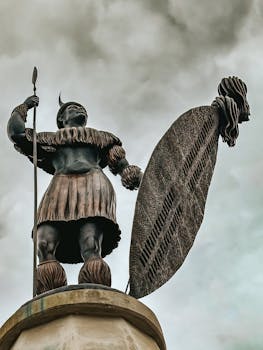Quantum computing has long been hailed as the future of computation, promising to solve problems that classical supercomputers can’t touch. On May 17, 2025, a groundbreaking study from USC researchers, published on SciTechDaily, confirmed this potential: quantum computers have finally outsmarted supercomputers in solving complex optimization problems using a technique called quantum annealing. This milestone, achieved with a D-Wave quantum processor, marks a significant step toward practical quantum advantage. In this 1100-word blog post, we’ll dive into the details of this breakthrough, explore what quantum annealing means for real-world applications, and discuss the broader implications for the future of computing.
Understanding Quantum Annealing: A New Approach to Problem-Solving
Quantum computing operates on principles vastly different from classical computing. While classical computers use bits to represent information as either 0s or 1s, quantum computers use qubits, which can exist in a superposition of states, enabling them to process multiple possibilities simultaneously. Quantum annealing, a specialized form of quantum computing, leverages these principles to tackle optimization problems—scenarios where the goal is to find the best solution among many possibilities.
The USC study focused on a class of optimization challenges known as spin-glass problems, which originate from statistical physics and model disordered magnetic systems. These problems are notoriously difficult because they involve finding a near-optimal solution in a vast landscape of possibilities, often with many local minima that can trap classical algorithms. Think of it like searching for the lowest point in a rugged terrain: classical methods might get stuck in a shallow valley, while quantum annealing can “tunnel” through barriers to find deeper valleys more efficiently.
Unlike traditional methods that seek exact solutions, quantum annealing prioritizes finding high-quality, near-optimal solutions—those within 1% of the best possible answer. This practical approach is ideal for real-world problems where perfection isn’t necessary, but speed and quality are. For example, in portfolio optimization, a mutual fund manager might aim to outperform a market index, not necessarily every other portfolio. Quantum annealing’s ability to deliver good-enough solutions faster than classical methods is what makes this breakthrough so exciting.
The Breakthrough: Quantum Annealing Outperforms Classical Algorithms
The USC researchers, led by Daniel Lidar, used a D-Wave Advantage quantum annealing processor to demonstrate a scaling advantage over classical supercomputers. They compared the quantum approach to the best classical algorithm for similar problems, known as parallel tempering with isoenergetic cluster moves (PT-ICM). The metric they used was “time-to-epsilon,” which measures how quickly each method can find a solution within a specified percentage of the optimal value.
To make this comparison fair, the team had to address a major challenge in quantum computing: noise. Quantum systems are highly sensitive to environmental interference, which can introduce errors and spoil their advantage. The researchers implemented a technique called quantum annealing correction (QAC), creating over 1,300 error-suppressed logical qubits on the D-Wave processor. This error suppression was crucial, allowing the quantum system to maintain its coherence and outperform PT-ICM in solving the spin-glass problems.
The results were striking. The D-Wave processor consistently found high-quality solutions faster than the classical algorithm, demonstrating a clear quantum advantage. This wasn’t just a one-off win; the study showed a scaling advantage, meaning that as the problem size increased, the quantum method’s performance improved relative to the classical approach. This scalability is a critical step toward making quantum computing practical for larger, more complex problems.
Why This Matters: Real-World Applications of Quantum Annealing
The implications of this breakthrough extend far beyond academic research. Optimization problems are ubiquitous in industries like finance, logistics, and artificial intelligence. For instance, in logistics, companies need to optimize delivery routes to minimize costs and time—a problem that grows exponentially complex with more destinations. Quantum annealing could provide faster, near-optimal solutions, saving time and resources.
In finance, as mentioned earlier, portfolio optimization is a prime candidate for quantum annealing. Investors often need to balance risk and return across thousands of assets, a task that involves evaluating countless combinations. Classical methods can take hours or days to find a good solution, but quantum annealing could drastically reduce this time, enabling real-time decision-making. Similarly, in machine learning, optimizing neural network parameters is a computationally intensive task where quantum annealing could offer significant speed-ups.
The USC study’s focus on near-optimal solutions also aligns with real-world needs. Many practical problems don’t require perfection; they need solutions that are good enough, delivered quickly. By prioritizing speed and quality over exactness, quantum annealing opens the door to applications where classical methods struggle to keep up.
The Bigger Picture: Quantum Advantage and the Road Ahead
This breakthrough builds on a series of recent advancements in quantum computing. Earlier in 2025, researchers from JPMorganChase and Quantinuum demonstrated certified randomness using a 56-qubit quantum computer, with implications for cryptography and fairness. Meanwhile, Oxford University scientists achieved distributed quantum computing by linking separate processors, addressing scalability challenges. These developments, combined with the USC study, suggest that quantum computing is moving closer to practical, real-world utility.
However, challenges remain. Noise and error correction are still major hurdles in quantum computing. While the USC team’s use of QAC was effective, scaling this approach to larger systems will require further innovation. Lidar noted that improvements in quantum hardware and error suppression could amplify the observed advantage, potentially extending quantum annealing to denser, higher-dimensional problems.
Another concern is accessibility. Current quantum annealing processors, like D-Wave’s, are specialized devices that aren’t widely available. For quantum computing to transform industries, companies will need broader access to these technologies, either through cloud-based platforms or more affordable hardware. Additionally, developing quantum algorithms that can tackle a wider range of problems will be crucial for mainstream adoption.
Skepticism and Broader Implications
While the USC study is a significant milestone, it’s worth examining the broader narrative around quantum computing with a critical eye. The tech industry often overhypes emerging technologies, and quantum computing is no exception. Claims of “quantum supremacy” or “quantum advantage” can sometimes overshadow the practical limitations of current systems. For instance, the problems solved in this study—spin-glass optimization—are highly specialized and don’t directly translate to everyday applications like web browsing or gaming.
Moreover, classical supercomputers are still incredibly powerful and versatile. They’ve been optimized over decades for a wide range of tasks, and they’re not going away anytime soon. Quantum annealing may excel in specific optimization scenarios, but it’s not a universal solution. The USC researchers themselves acknowledged that their approach is best suited for problems where near-optimal solutions are sufficient, which limits its applicability.
There’s also the question of cost and energy efficiency. Quantum computers, especially those requiring ultra-low temperatures, are expensive to build and operate. If quantum annealing is to compete with classical methods, it will need to demonstrate not just speed, but also economic viability. Without clear data on the cost-benefit trade-offs, it’s hard to assess the true impact of this technology.
A Step Toward a Quantum Future
The USC researchers’ demonstration of quantum annealing’s advantage over classical supercomputers is a pivotal moment in the evolution of quantum computing. By solving complex optimization problems faster and more efficiently, quantum annealing has shown its potential to tackle real-world challenges in finance, logistics, and beyond. The use of error suppression techniques like QAC also highlights the progress being made in overcoming quantum computing’s inherent challenges.
Yet, this breakthrough is just one step in a long journey. Quantum computing is still in its infancy, and significant hurdles remain before it can achieve widespread adoption. For now, the USC study serves as a proof of concept—a glimpse into a future where quantum computers complement, and perhaps eventually surpass, classical systems in solving the world’s most complex problems. As hardware improves and algorithms evolve, quantum annealing could become a game-changer, reshaping industries and redefining what’s possible in computation.



